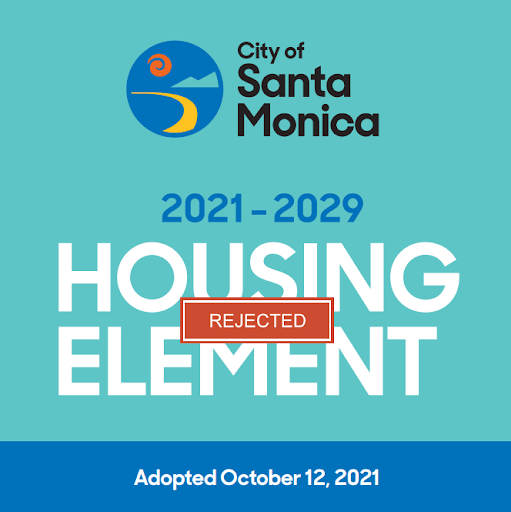 One would hope that a city where a middling home sells for around $1.8 million would recognize that housing affordability is an emergency and marshall all resources at its disposal to get this problem under control. Unfortunately, Santa Monica’s recently adopted Housing Element shows that the city’s priority is maintaining the status quo for people who are already comfortable. This amounts to telling cost-burdened renters, people experiencing homelessness, and people who want to live closer to work that the city can’t be bothered to change.
One would hope that a city where a middling home sells for around $1.8 million would recognize that housing affordability is an emergency and marshall all resources at its disposal to get this problem under control. Unfortunately, Santa Monica’s recently adopted Housing Element shows that the city’s priority is maintaining the status quo for people who are already comfortable. This amounts to telling cost-burdened renters, people experiencing homelessness, and people who want to live closer to work that the city can’t be bothered to change.
You don’t have to take my word for it. The California Department of Housing Community Development (HCD) declined to certify Santa Monica’s adopted Housing Element in a letter dated February 8, 2022. HCD criticized a variety of deficiencies in Santa Monica’s housing plan, including:
- Inadequate analysis and programs to affirmatively further fair housing (AFFH).
- Inadequate analysis and overly optimistic assumptions about the realistic development capacity of properties in the sites inventory.
- Claiming historical ADU production inconsistent with state figures, which has the effect of making it falsely appear that less policy change is necessary to accommodate the city’s Regional Housing Needs Allocation (RHNA).
- Failure to document that inventory sites have adequate existing or planned infrastructure to support new housing.
- Requiring more parking for emergency shelters than allowed by state law.
- Inadequate analysis of governmental constraints to housing and lack of specific commitments to remove constraints.
- Inadequate analysis of fees as constraints to housing.
- Lack of specific commitments to allow by-right approvals, including required by-right approvals for certain developments that include affordable housing on sites identified in past housing elements where development did not occur.
- Inadequate commitments to redevelop city-owned sites with housing.
- Over-reliance on Accessory Dwelling Units (ADUs) to AFFH. ADUs are facilitated primarily by state law, so the city’s compliance with those laws is a minimal action to take.
Abundant Housing LA has been tracking the Santa Monica housing element update project since 2020 and has weighed in with five comment letters so far. Our most recent comment letter, dated October 8, 2021, previewed many of the critiques that HCD incorporated in declining to certify the plan, including the plan’s inadequate analysis of realistic development capacity, improper projections of future ADU production, lack of meaningful efforts to remove governmental constraints to housing and inadequate programs to AFFH.
Stay updated on housing, sign up for our newsletter
Furthermore, we collaborated with MapCraft Labs to conduct an independent analysis of Santa Monica’s sites inventory. The analysis found that the city’s claimed capacity for new housing in the inventory could fall short by 1,800-3,500 homes. It also made several recommendations to improve the plan, including upzoning property to increase development capacity, reducing or eliminating off-street parking requirements to make housing development more affordable and feasible, better incentivizing the development of affordable homes, and adopting minimum development densities for inventory sites so that projects don’t come in with fewer units than the plan anticipates.
So where do we go from here? 6th Cycle housing elements in LA County were due on October 15th, 2021. This means Santa Monica’s 5th Cycle housing element is no longer valid and the city is out of compliance with state housing element law. This has real consequences. Firstly, the city will be ineligible or at a disadvantage in applying for certain state grants. Next, if the city fails to adopt a compliant housing element and HCD does not certify the element within 120 days of the deadline (i.e. by February 12, 2022), the city must complete any required rezoning to implement the element within one year (versus three years). Finally, a non-compliant housing element leaves cities like Santa Monica open to the “builder’s remedy,” which allows applicants for certain housing developments that include affordable units to get their permits from a city, even if the project does not comply with local zoning. Thanks to the Housing Accountability Act, cities must make certain findings in order to deny such a project and are constrained in their ability to do so. This memo from HCD has detailed guidance on the relevant criteria (see pp. 4, 14-15).
Cities must comply not just with the letter, but also with the spirit of housing element law in order to make housing more abundant and affordable, while protecting tenants, advancing racial justice, and sustainable development patterns. We hope Santa Monica revises their plan in a meaningful way and comes into compliance soon. The people of Santa Monica and Los Angeles County deserve nothing less.
Like what you just read? Stay connected with us.



